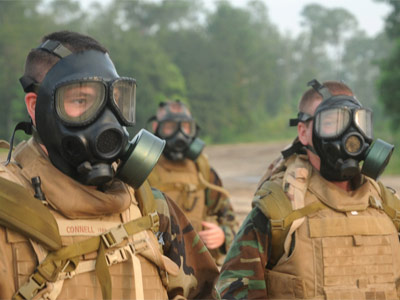Anne-Marie Slaughter Conquers Uncertainty
Did Syria use chemical weapons in December? State Department officials aren't sure. But Anne-Marie Slaughter is.
 It’s time for the United States to act in Syria, says Anne-Marie Slaughter in the Washington Post, but the Obama administration is doing all it can to avoid recognizing that. She suggests it is succumbing to “the temptation to hide behind the decision to invade Iraq based on faulty intelligence about weapons of mass destruction” as it carefully hedges intelligence suggesting that Syria used chemical weapons.
It’s time for the United States to act in Syria, says Anne-Marie Slaughter in the Washington Post, but the Obama administration is doing all it can to avoid recognizing that. She suggests it is succumbing to “the temptation to hide behind the decision to invade Iraq based on faulty intelligence about weapons of mass destruction” as it carefully hedges intelligence suggesting that Syria used chemical weapons.
Slaughter mentions a secret December 2012 cable from the U.S. consul in Istanbul, which she says “conclud[es] that it was likely that the Syrian government had used chemical weapons” and reports victims “responded well to atropine, a drug used to treat people exposed to the nerve gas sarin.” However, charges Slaughter, the administration said the chemical used was a riot control agent, and “similar evidence has been squelched again and again.”
But the cable, obtained by Foreign Policy reporter Josh Rogin, doesn’t say any of that with such certainty. In fact, it states that it “is not able to definitely say whether chemical weapons were in fact used in the December 23 attack.”
Rogin notes that there are multiple discrepancies in reports of what happened: Was it delivered by a vehicle, as initial reports said, or by several short-range missiles, as later reports said? Did atropine make the patients better—as two Syrian doctors told Rogin—or make it worse, as one contact told the State Department? Did most victims have dilated pupils, as the contact said, or pinpoint pupils, as the two doctors say? Was the gas colorless, as the State Department-supported media project BASMA reported, or were there “clouds of white smoke,” as State’s contact said? Was the gas odorless, as in BASMA’s account, or was there a “pungent odor,” as the doctors say? These discrepancies don’t just invite questions about what happened. They also make it harder to determine what gas was used, since different chemical weapons (and “riot control agents”) have different properties.
Yet Slaughter’s account removes all this subtlety and contradiction. And this seemingly willful blindness to shades of gray in the interpretation of intelligence should awaken memories of the rush to war in Iraq, the same rush that Slaughter cautions Obama not to “hide behind.” It’s hard to make a categorical distinction between Slaughter’s interpretation of the Istanbul cable and, say, the 2002 analysis work of Douglas Feith’s Office of Special Plans.
Reports now swirl of a new Syrian chemical attack, this time in Aleppo in March. The latest set of evidence appears much more reliable than that in the Istanbul cable (although Arms Control Wonk’s Jeffrey Lewis notes it’s also not the best). It may be true that Syria has used chemical weapons on its own people. If so, this is further proof of the utter wickedness of the Assad regime. Yet Slaughter’s Cheneyesque reading of the Istanbul cable is a fresh reminder of the eagerness for war in some circles—right and left.
